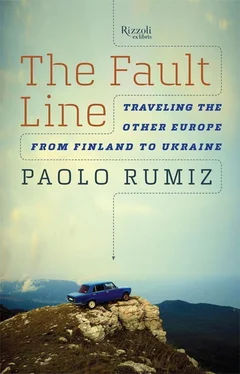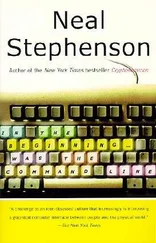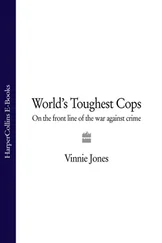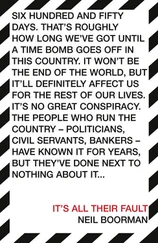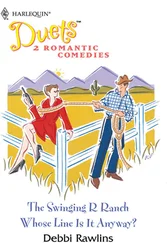So I had to leave, then. But for where? The Iron Curtain was gone; the fences had been replaced by landscaped parklets, museums, and cycling paths. In order to find some still untamed places, you had to go beyond that, to the eastern frontier of the European Union. Maybe that was where “another world” began.
And so there was nothing more to do than imagine a borderline itinerary from the glacial Arctic Ocean to the Mediterranean, all the way to Turkey, or maybe even Cyprus. There would be no lack of surprises. Between Russia and Finland, the barrier separating the two worlds still ran alongside the fences of the big chill; the bunkers from 1940 had not been dismantled. Two steps from the North Pole was Murmansk, with the most mysterious submarine base in the world, the one from which the submarine Kursk set sail on its final tragic mission. There was Belarus, the last Communist dictatorship in Europe, and then Kaliningrad, a city of spies come in from the cold, surrounded on all sides by the European Union. Followed by Ukraine, with its elbow of the Carpathians crisscrossed by smugglers and the powerful remnants of its lost Jewish presence. And then, the Black Sea, with its frightful, unending silence. That was where I had to go.
Now I’m on a vertical climb, toward Boreas, the land of the last light. After Napapijri—the Arctic Circle—the Finnish railroad stops, and the only way to get to land’s end is this soporific motor coach. The driver is a sort of harpooner, with a walrus mustache. He’s been driving without a bump since six in the morning.
The map says I’m heading north between two historic regions, Karelia and Bothnia. Two different worlds, it would seem, but I see the same lakes and snowfields left and right. The colors are all muted, except for a fuzzy down of tiny yellow flowers on the tundra.
Gray, on the other hand, is giving it all it’s got, displaying an amazing array of shades and hues: the coal gray of the sunless lakes, the asbestos gray of the rocks, the rifle-barrel gray of the compact bank of clouds above the snowfields, the granulated gray—shiny as mica—of the still-frozen higher lakes, the coppered or reddish silver gray of the birches, and the nickel or opal gray of the sea when it bristles in the fjords, depending on whether or not the sun comes out. The streaks of windblown snow are the only thing capable of marking the humps in the terrain in a world without shadows. I can understand why the Finns and the Scandinavians love the flag: more than anything else, it is a salute to color, and therefore to life, in this mineral misery. Even the houses display the national colors of the North—red, blue, yellow, and white—like matchboxes scattered on the detritus of a mine.
For a while now, a fine snow has been falling. The shiny Scandinavian shield is all covered in flour. In the seat pocket I find a brochure with some maps of the area. There is also a more general map of the Northern Hemisphere as seen from the Pole. I’ve never seen anything like it. Eurasia, with its Siberian spine, is like an enormous cow with its hind legs kicking. India and Indochina are its hooves, and Kamchatka the tail. North America is upside down except for a bend down low, on the left, around the Gulf of Mexico. On the margins of the map, the equatorial lands are dilated as though they were under a magnifying glass, while the empires of the North—Russia and America—lose their arrogant magnitude. It’s the vertical dimension of the world that is now beginning.
Before this I had seen only horizontal maps, and their highest level of grandeur had been revealed to me on another snowy day similar to this one, on Hungary’s border with Ukraine, not long after the fall of the Wall. It was in the control room of the immense railway station in Záhony, where, with deafening creaks and squeals, the eastbound trains were lifted off the track to have their wheel trucks replaced to ride on the imperial-gauge Russian tracks. It was a cylindrical projection map of the ex–Soviet Union, which covered an entire wall, sixteen feet by ten, above the electric control panel for track switches. On the far right, beyond the Bering Strait, the western edge of America. On the far left, I managed to make out TRST, for Trieste.
I felt like an ant in the immensity of steppes and marshes where the rivers snaked along in leisurely meanderings before reaching the sea. My Europe was a miserable periphery. And the North, without the convergence of the meridians, was monstrously enlarged. Halfway down from top to bottom, on the fabled Trans-Siberian line, were the names of every single station, and there were so many of them that in order to fit them all in, they’d had to use a minuscule font.
For lack of space and because the empire extended horizontally, the names of the places along the railroad lines were written vertically, forming a kind of long millipede. Never again have I seen such a representation of immensity.
I turn my general map of the journey in my hands and make a few discoveries.
First, the European Union is six hundred miles wider than it is long. Second, as you move closer to the Pole, the spaces between the meridians get narrower, like the tips of orange wedges, and they narrow so rapidly that at the top all you have to do to change your longitude is take a step left or right. I am much farther east than it seems; my meridian cuts Turkey in two and goes on down to Alexandria.
Third, the local maps here, rather than square, are isosceles trapezoids. On a notice board in Utsjoki, on the Finnish border with Norway, I see a map like this for the first time in my life. Fourth, in this contiguity of longitudes, time is deceptive. If it’s eight o’clock in Norway, it’s nine o’clock in Finland and ten o’clock in Russia, but because in the far north a piece of Norway inserts itself like an ingrown toenail between Russia and Finland, someone traveling east on a six-mile journey has to turn his clock back one hour and then ahead two hours, despite never changing direction.
The sea finally makes its appearance at Varangerbotn. The coach lets off almost all of its passengers as a snowstorm begins. A young man is standing motionless at the bus stop. He stares into the void, looking frozen; then he gives a sign of life, stretching out his hand as though to lean against the wall, only the wall isn’t there and he falls to the ground in slow motion. So inert that he does almost nothing to break his fall, he hits his head and lies there on the ground quaking with what seem like epileptic contractions. I pick him up and sit him down on a bench. He’s stiff and up to his hair in alcohol. I sense that I’ve arrived in a tasteless, colorless world of desperation. One of the other passengers explains to me that an ambulance will certainly arrive soon. Here everything is delegated to the state, even compassion. I have to get back on the coach. I’ve got a painful foot from a recent fracture, and sitting for such a long time has made it swell up like a ten-pound salami. As we pull away, I see the drunk leaning like a dead herring against a billboard with an enormous frost-covered crab, just pulled out of the water. Under it are the words GIANT CRAB SAFARI, and in the middle of all that wind and snow, the African word seems offensive, to be banned in these latitudes, a monument to the damnation of mass tourism.
We start climbing again toward the mountains and the Neiden River, sacred to the Sami reindeer herders, who, here at the place where they used to come to catch fish with their hands, built an Orthodox church dedicated to Saint George.
The place that the Sami chose for their cemetery has been a sacred place for ages. It’s perfectly situated on the border between sea and mountain, where the reindeer herders go down to the sea to meet the salmon fishers, who, vice versa, move upriver toward the mountain spring in pursuit of their prey. The place is contested by Russians, Norwegians, and Finns, without regard for the only real owners, the nomads of the tundra who do not recognize nations and frontiers. Result: the newly restored church has been closed, and it seems that nobody can go inside, not even the king of Norway. Its only rightful attendees are the ghosts of a people swallowed up by the snow, whose language, around these parts, nobody speaks anymore.
Читать дальше
